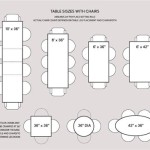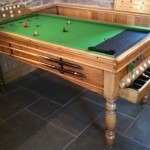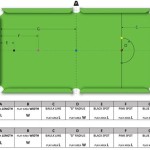How To Repair Scratched Glass Coffee Table
A glass coffee table can be an elegant and functional addition to any living space. Its transparent surface provides a modern aesthetic and allows light to flow freely, enhancing the room's overall ambiance. However, glass, despite its apparent strength, is susceptible to scratches. These imperfections, ranging from hairline abrasions to more noticeable gouges, can detract from the table's visual appeal and diminish its value. Understanding the causes of scratches and implementing appropriate repair techniques is crucial for maintaining the pristine condition of a glass coffee table.
Scratches on glass surfaces are typically caused by abrasive materials coming into contact with the glass. Common culprits include dust particles, sand, cleaning products containing harsh chemicals, and everyday objects such as keys, jewelry, or ceramic items. Even seemingly innocuous actions, like sliding decorative items across the table's surface, can lead to microscopic scratches over time. The severity of the scratch depends on the hardness of the abrasive material and the amount of pressure applied.
Before attempting any repair, it is essential to assess the type and severity of the scratch. Hairline scratches, often barely visible to the naked eye, can typically be addressed with milder polishing methods. Deeper scratches, which can be felt with a fingernail, may require more aggressive techniques involving specialized polishing compounds and equipment. Attempting to repair a deep scratch with a method suitable for hairline scratches will likely yield unsatisfactory results and could potentially worsen the damage. Proper assessment ensures that the chosen repair method is appropriate for the specific damage.
Assessing the Damage and Gathering Necessary Materials
The first step in repairing a scratched glass coffee table involves a thorough inspection of the damage. Clean the glass surface with a mild glass cleaner and a microfiber cloth to remove any dirt, dust, or debris that could obscure the scratches. Once the surface is clean and dry, examine the scratches under a bright light source. Use a magnifying glass, if available, to better assess the depth and extent of the damage. Note the number, length, and width of the scratches, as this information will inform the selection of appropriate repair materials and techniques.
Once the damage has been assessed, gather the necessary materials for the repair. The specific materials required will depend on the severity of the scratches and the chosen repair method. For minor hairline scratches, the following materials are typically sufficient:
*Glass cleaner: A standard glass cleaner will remove any surface contaminants.
*Microfiber cloths: These cloths are lint-free and will not scratch the glass.
*Cerium oxide polishing compound: This fine powder is specifically designed for polishing glass.
*Distilled water: Distilled water is free of minerals that could leave streaks or scratches.
*Polishing pad or felt bob: A soft polishing pad or felt bob attached to a rotary tool is ideal for applying the polishing compound.
*Painter's tape: This tape will protect the surrounding areas of the glass from accidental damage during the polishing process.
For deeper scratches, additional materials may be required:
*Diamond polishing pads: These pads are available in various grits and are used to remove deeper scratches and imperfections.
*Variable-speed rotary tool: A rotary tool with adjustable speed settings is necessary for using diamond polishing pads effectively.
Spray bottle: A spray bottle filled with water will help to keep the glass surface lubricated during the polishing process. *Safety glasses and gloves: Eye and hand protection are essential when working with power tools and polishing compounds.
It is crucial to acquire high-quality materials for the repair process. Using cheap or inappropriate materials can lead to unsatisfactory results or even further damage to the glass.
Repairing Minor Hairline Scratches
Minor hairline scratches can often be effectively repaired using cerium oxide polishing compound. This method involves gently polishing the scratched area with a mixture of cerium oxide and water, gradually removing the imperfections and restoring the glass's clarity.
Before beginning the repair, prepare the area by cleaning the glass surface thoroughly with glass cleaner and a microfiber cloth. Allow the surface to dry completely. Apply painter's tape around the scratched area to protect the surrounding glass from accidental damage during the polishing process. This step is particularly important if the scratch is located near the edge of the table.
Next, prepare the cerium oxide polishing compound by mixing it with distilled water to form a slurry. The consistency should be similar to that of toothpaste. Follow the manufacturer's instructions for the recommended ratio of cerium oxide to water. Applying too much water will dilute the compound and reduce its effectiveness, while using too little water can make the mixture too abrasive.
Apply a small amount of the cerium oxide slurry to the polishing pad or felt bob. Start with a low speed setting on the rotary tool and gently polish the scratched area in a circular motion. Apply light pressure and avoid dwelling on any one spot for too long, as this could create uneven polishing. Regularly check the progress of the repair by wiping away the slurry with a clean microfiber cloth. If the scratch is still visible, repeat the polishing process, gradually increasing the speed of the rotary tool if necessary.
Continue polishing until the scratch is no longer visible. Once the scratch has been removed, clean the area with glass cleaner and a microfiber cloth to remove any remaining polishing compound. Inspect the repaired area under a bright light source to ensure that the scratch has been completely eliminated. If necessary, repeat the polishing process to achieve the desired results.
Repairing Deeper Scratches
Deeper scratches require a more aggressive approach. Diamond polishing pads are typically used to remove the damaged glass and create a smooth, even surface. This process involves using a series of pads with progressively finer grits, starting with a coarser grit to remove the bulk of the scratch and finishing with a finer grit to polish the glass to a high shine.
As with the repair of minor scratches, preparation is crucial. Clean the glass surface thoroughly and apply painter's tape around the scratched area to protect the surrounding glass. Fill a spray bottle with water and keep it readily available to lubricate the glass during the polishing process.
Begin with a coarse-grit diamond polishing pad (e.g., 200-grit or 400-grit) attached to a variable-speed rotary tool. Set the tool to a low speed and gently polish the scratched area in a circular motion. Apply light pressure and keep the glass surface lubricated with water from the spray bottle. The water will help to cool the glass and prevent overheating, which could lead to cracking or further damage.
Regularly check the progress of the repair by wiping away the water with a clean microfiber cloth. Continue polishing until the scratch is significantly reduced in depth. Once the coarse-grit pad has removed the bulk of the scratch, switch to a medium-grit pad (e.g., 600-grit or 800-grit) and repeat the polishing process. This step will further refine the surface and remove any remaining imperfections.
Finally, finish with a fine-grit polishing pad (e.g., 1000-grit or higher) to polish the glass to a high shine. This step will restore the glass's clarity and transparency. Continue polishing until the repaired area is indistinguishable from the surrounding glass.
After completing the polishing process, clean the area with glass cleaner and a microfiber cloth to remove any remaining polishing residue. Inspect the repaired area under a bright light source to ensure that the scratch has been completely eliminated and that the surface is smooth and even. If necessary, repeat the polishing process with the fine-grit pad to achieve the desired results.
It is important to note that repairing deep scratches can be a time-consuming and challenging process. If you are not comfortable using power tools or working with polishing compounds, it is best to consult with a professional glass repair technician.

How To Repair Scratches In Glass Tabletops Glassnow

How To Repair Scratches In Glass Tabletops Modernmom

How To Get Scratches Out Of A Glass Table Simply Tablecloths

How To Remove Scratches From Glass Furniture Glassdomain Blogglassdomain Blog

Easy Glass Table Top Repair Using

Are Glass Table Scratches Permanent Murray

The Fastest Fix For A Scratched Glass Table

9 Effective Ways To Remove Scratches From Glass Tables Homelyville

How To Easily Remove Glass Scratches Family Handyman

Need Help To Protect My Glass Table








